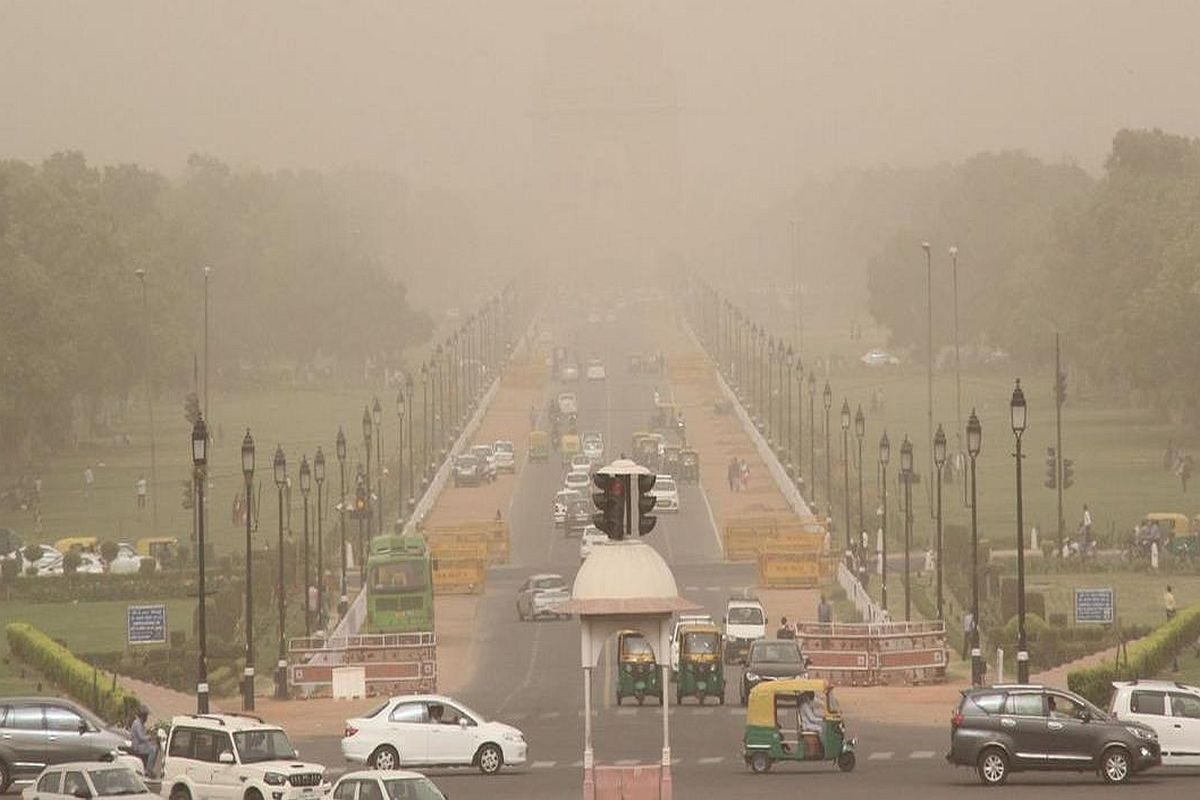Delhi PWD Minister inspects development projects
During the inspection, Minister Pravesh Verma took stock of three important projects. The first is from Bhoro Marg to Sarai Kale Khan where road strengthening work is going on till the ring road.
Delhi’s average air quality index on Sunday continued to be in ‘very poor’ zone with a reading of 331, according to the Central Pollution Control Board (CPCB).

Representational image (File Photo: IANS)
Delhi’s average air quality index on Sunday continued to be in ‘very poor’ zone with a reading of 331, according to the Central Pollution Control Board (CPCB).
However, with a minor improvement of 23 points in the average AQI as compared to Saturday, only one place recorded air quality in ‘severe’ zone, measuring AQI levels above 400, the pollution control agency data said.
Advertisement
According to CPCB, exposure to ‘severe’ category of air quality affects healthy people and seriously impacts those with existing diseases.
Advertisement
It said prolonged exposure to air under the ‘very poor’ category may cause respiratory illness.
Nehru Nagar area recorded the worst AQI reading on Sunday at 432, followed by Mundka- 380, Wazirpur- 380 and Anand Vihar-372.
Till Friday, no area across the city recorded an AQI falling under the ‘severe’ zone.
The prominent pollutants in the city’s air on Sunday were the PM 2.5 micro particles as per the data of the pollution control agency.
The PM 2.5 micro particles are those pollutants that are small enough to penetrate deep into the respiratory tract and likely trigger health issues, as experts say.
The air quality data released on Sunday was based on readings and observations from the 36 out of 40 air monitoring stations across the city, functioning under multiple agencies.
According to the Indian Institute of Tropical Meteorology (IITM), there is a likelihood of the air remaining in the ‘very poor’ category for the coming two to three days.
“The air quality is likely to remain in Very Poor category from 18.12.2023 to 20.12.2023 The outlook for subsequent 6 Days: The air quality is likely to remain in the Very Poor to Poor category”, the IITM said on Sunday.
Delhi recorded a minimum temperature of 6.5 degrees Celsius on Sunday, which was 2 notches below the season’s average, the India Meteorological Department (IMD) said.
The MeT Department has forecast shallow fog in the morning for Monday with minimum temperature to hover around 7 degrees Celsius and maximum to hover around 24 degrees Celsius.
Meanwhile, all the anti-pollution measures like spraying of water along roads, mechanized sweeping, operation of anti-smog guns around hotspots and other actions are underway in the city.
The efforts to keep a check on biomass burning and vehicular pollution are underway along with monitoring of the measures in place at the essential construction sites by the government so as to prevent dust.
Regular checks on polluting vehicles without valid Pollution Under Control certificates were being conducted across Delhi.
Graded Response Action Plan (GRAP) stages-I & II continue to remain in effect across the city and NCR region as ordered by the Commission for Air Quality Management (CAQM).
Meanwhile, the air quality witnessed a slight improvement across cities like Faridabad, Ghaziabad, Noida, Gurugram and Ghaziabad, and is now in the ‘poor’ category.
These cities are adjacent to the national capital and part of the NCR.
Advertisement